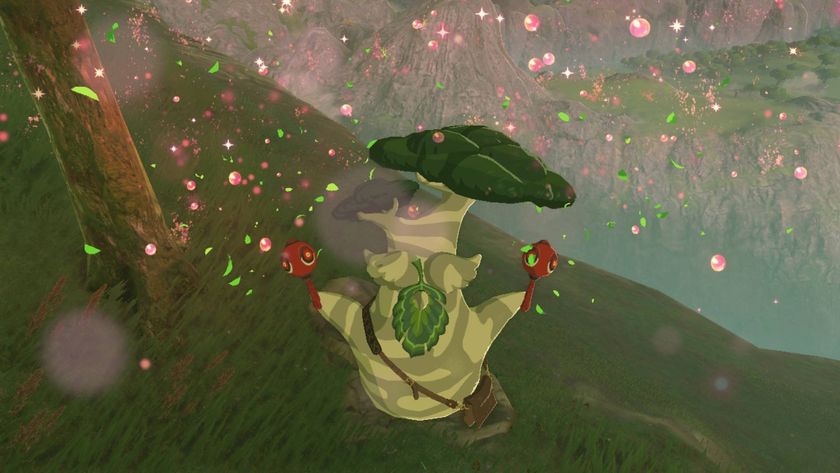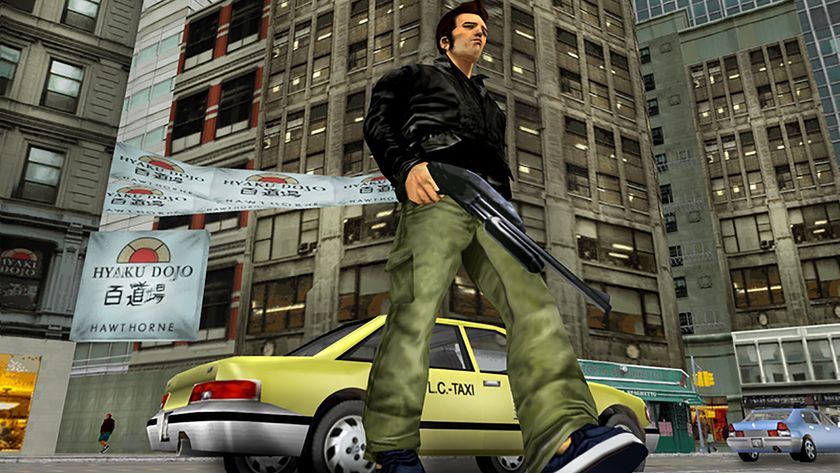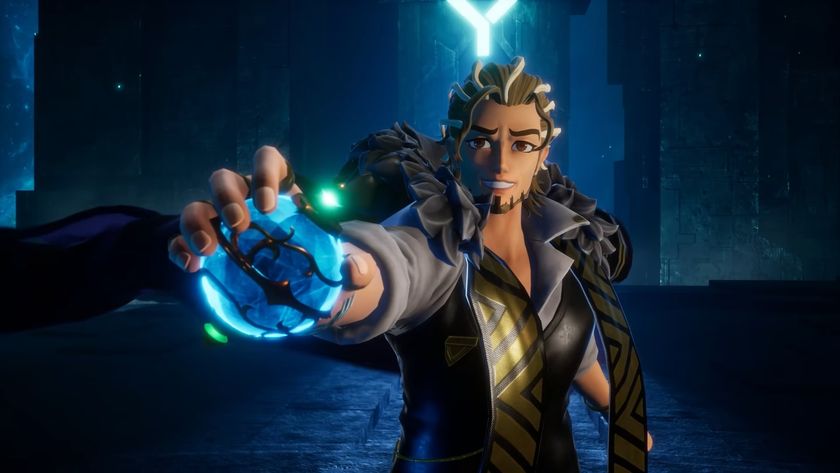More games need interactive loading screens
These games made us look forward to waiting

Loading loading
The age of CD-ROMs allowed for better music and polygons sharp enough to cut glass, but the storage medium also introduced gamers to the horrors of loading. Virtually every game of the era (that wasnt on N64) continually paused the action to prepare the next bit of gameplay. The problem has lessened over time as technology improved, but as long as discs are part of the equation, youll likely have to wait at least once per game for a load screen to pass.
While weve been waiting for loads to become a footnote in gaming history, some developers have found clever ways to help us pass the time. The following load screens are fun enough to make the dozens of seconds we have to wait bearable. If only more titles had loading screens as creative as...
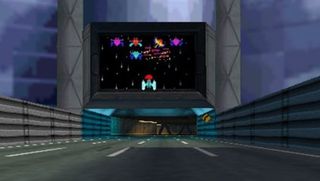
Ridge Racer (PSOne)
Most conversations about playable loading screens begin with Ridge Racer, likely because the it was the first one most gamers experienced. Ridge Racer was a PlayStation launch game that really showcased the new hardware, and while players waited for the fancy arcade port, they were treated to about 10 seconds of Namcos classic Galaxian. The coin-op shooter was fully playable as you waited for a race to load, starting Namcos practice of minigames within load screens.
The Galaxian demo is so well known that Sonys Kaz Hirai talked it up during his infamous E3 2006 appearance, so its unfortunate that so few developers have replicated it, though theres a good excuse. Namco has the exclusive patent on these types of load screens, so legally no other developer can put them in their games. Supposedly the patent runs out in 2015, so maybe by then well see more minigames like Ridge Racers, but thats no excuse for why Namco hasnt made all of its loading screens as fun as this one.

Okami
Even though no developer outside of Namco can add fuller games to their load screens, that hasnt prevented other titles from making loading fun. Okami found a very simple way to do it, and in a way that many gamers may have missed early in the adventure. But being observant of the paw prints in the loading screen will pay off in the main campaign.
The loading screens had two variations: one had you rhythmically press X as each paw appeared onscreen, the other tasked you with mashing the X button at least 50 times while the content loaded. Successfully doing either would get you some valuable in-game currency, but they were subtle enough that only inquisitive players would find them. In an interesting twist, the Wii rerelease of Okami had such short load times that the minigames were cut. Such is the price of progress.
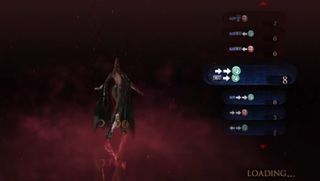
Bayonetta
When Okamis game director--Hideki Kamiya--began work on his next title, he continued experimenting with load screens, but took them a few steps farther. Kayimas Bayonetta is a wildly fun game, but one that involves mastering deep combos and waiting for massive levels to load. Bayonettas developers found a way to deal with both those problems in the game's loading areas.
As the game content is prepared, Bayonettas long-haired protagonist can hone her skills against an unending stream of enemies while button instructions for combos scroll on the right side of the screen. These brief demos gave players some much needed practice with Bayonettas abilities, and its something more action games should take note of. Why stare at a static screen when we could be perfecting our dodge offset techniques?
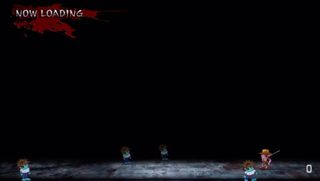
Onechanbara Bikini Samurai Squad
The Onechanbara games are far more well known for their silliness and perverted fanservice than clever game design. But behind the bikini-clad zombie slayer is one of the smarter uses of a load screen weve seen. And yes, it also features a bikini-clad zombie slayer.
Bikini Samurai Squad is an homage to the trashy B-movies of the 1970s, right down to the crummy dialog and barely-dressed leads, and the loading screens recreated that concept in miniature form. As the game loaded, players controlled a tiny version of Onechanbara as she hacked her way through swaths of zombies and nabbed the coins popping out of their bifurcated bodies. If the rest of the game was this innocently fun, we wouldnt be embarrassed to be caught playing it.

Wave Race: Blue Storm
Nintendo history is filled with examples of the companys hate for the very concept of loading. The N64 stuck with costlier cartridges to avoid it, the GameCube mini-discs were created to shorten it, and the company still uses carts on its handhelds to lessen load times as much as possible. So the 'Cubes Wave Race: Blue Storm is one of those rare moments where Nintendo tried to make load times more fun instead of doing its best to ignore them.
As would-be wave racers waited to hop on their digital jet skis, Blue Storm recreated its watery start screen with a little bit more interactivity. Moving the cursor made the water react realistically, a cute trick that showcased the games then-impressive water physics. Blue Storms use of watery visuals is pretty quaint today, but we miss the time when merely moving fake water elicited oohs and ahs from your friends.
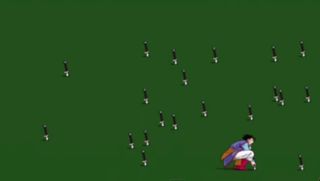
Dragon Ball Z: Budokai games
They have modest sales now, but there was a time when Dragon Ball Z games were huge in the US, and the Budokai series was the fan favorite. It wasnt just the fast combat that pleased the DBZ faithful--it was also the huge amount of fanservice that was increasingly packed into the series. That was especially true with the continually clever load screens.
While fans excitedly waited for their 9000th ultimate showdown between Goku and Vegeta to load, they could mash the X button to make Goku stuff his face with food, or get little versions of Cell to grow out of the ground. Other sequences recreated moments familiar to longtime fans, like Gohan trying to uproot the Z sword or Goku climbing Korin Tower (you can see more examples here). Namco had a hand in most (if not all) of these DBZ titles, so it was nice to see them pick up the torch of loading screen creativity once more.

Rayman Legends
One of our favorite uses of a load screen is also our most recent example on the list. Rayman Legends takes the stripped-down approach to platforming that its predecessor had, but pushes the fun factor to the extreme in its sidescrolling world. Thats even true for when the game forces players to wait for the next level.
Admittedly, were used to limited load times in platformers these days, so any wait in Rayman was a surprise, but the devs made it worthwhile to gamers. Rayman and his buddies are cast in silhouette and are left to chase after a health item on the way to the stage. Its a nice way to reward skilled play and it adds further fuel to the games competitive spirit. If a platformer has to have loading, it needs to be at least as fun as Rayman Legends.

The Idolmaster 2
Well be the first to admit that the Idolmaster (or Idolm@ster) series of games arent for us. The titles are basically a rhythm game adaptation of Harvest Moon, only replace the livestock with impressionable teenage girls. The idea of playing as a producer that grooms underaged girls for oversexualized stardom isnt something were into, but at least the devs know how to have a good time with the load screens.
In the 360 version Idolmaster 2, loading screens are eerily silent until series regular Ami Futami pops up to sing acapella. Ami caterwauls a tribute to loading screens as players wait, and while it may not be all that interactive, at least its funny. Wed love it if more devs embraced this kind of goofy joy (while also ignoring every single other thing Idolmaster does).
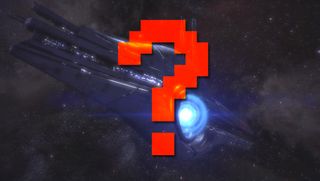
Now loading
Those are the few examples we could get together, proving that loading gameplay still has lots of room to grow. Did we miss any of your favorites, or do you hope that loading will be nonexistent by the end of the next-gen? Let us know in the comments!
And if you're looking for more, check out what all devs should learn from the Castle of Illusion remake and our editorial it's ok to be a rip-off (as long you're good at it).

Henry Gilbert is a former 12DOVE Editor, having spent seven years at the site helping to navigate our readers through the PS3 and Xbox 360 generation. Henry is now following another passion of his besides video games, working as the producer and podcast cohost of the popular Talking Simpsons and What a Cartoon podcasts.
